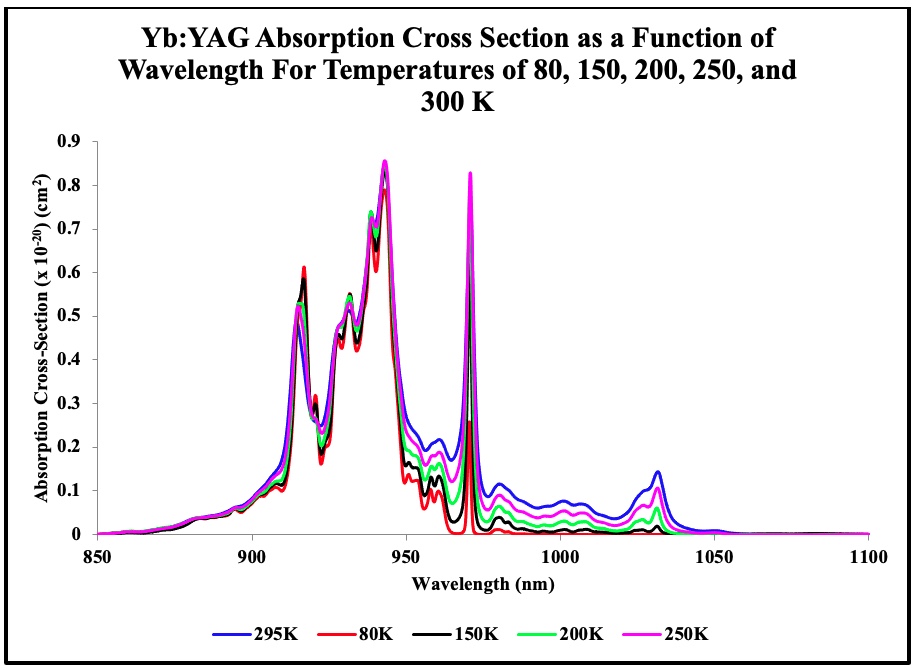Technologies
The Engine That Drives Our Product Innovations
Integrated Laser Systems (ILS)
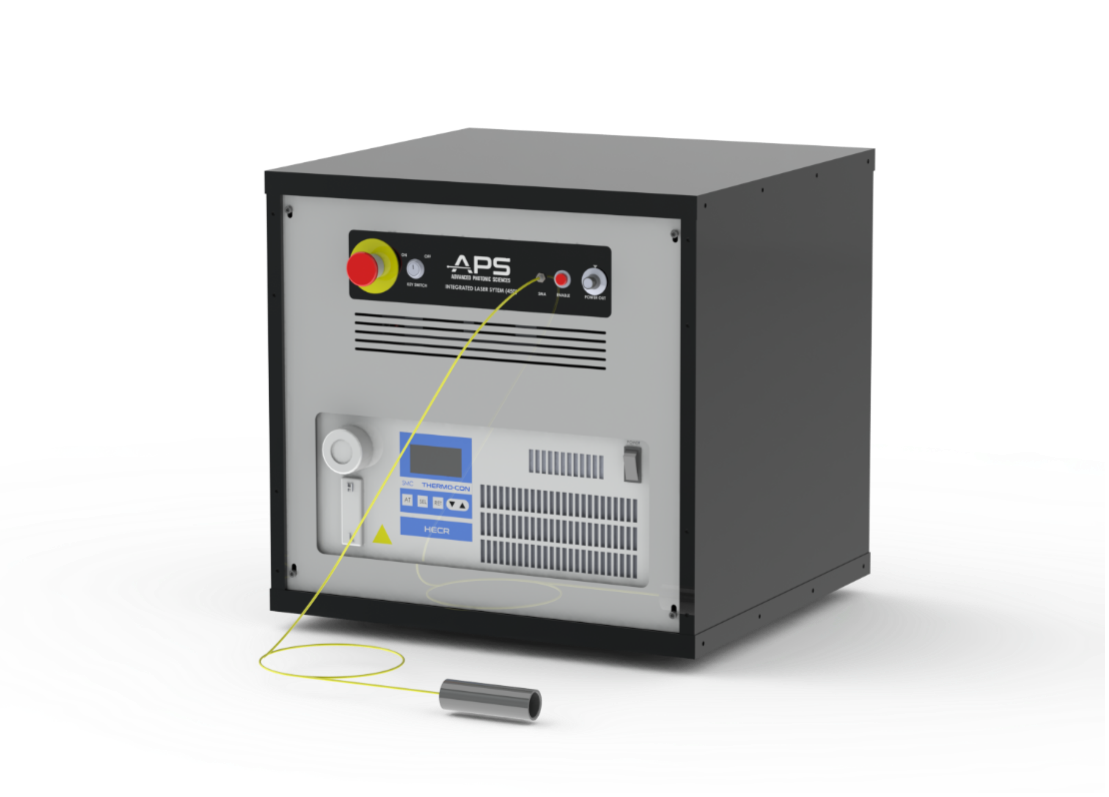
APS has developed a new Integrated Laser System product. Our first ILS is a high-power fiber-coupled 20W blue (445 nm) laser system (ILS-445-20). ILS address the need for turnkey high-power fiber-coupled diode lasers that are fully integrated. Important features of this new product are shown below:
ILS Features
- Integrated High-Efficiency Power Supply
- Efficient Integrated TEC Based Temperature Controller
- Fiber-Coupled 445 nm Blue Diode Source
- 10 W, 20 W, and 50 W Output Power
- 105, 200 µm Fiber Core, 0.22 NA
- Emergency Stop Button
- Safety Interlock
- Standard 19” Rack Mount
ILS can also be provided at other important diode wavelengths. Please contact us for more information.
Laser Modules
- SmartLaserTM Module
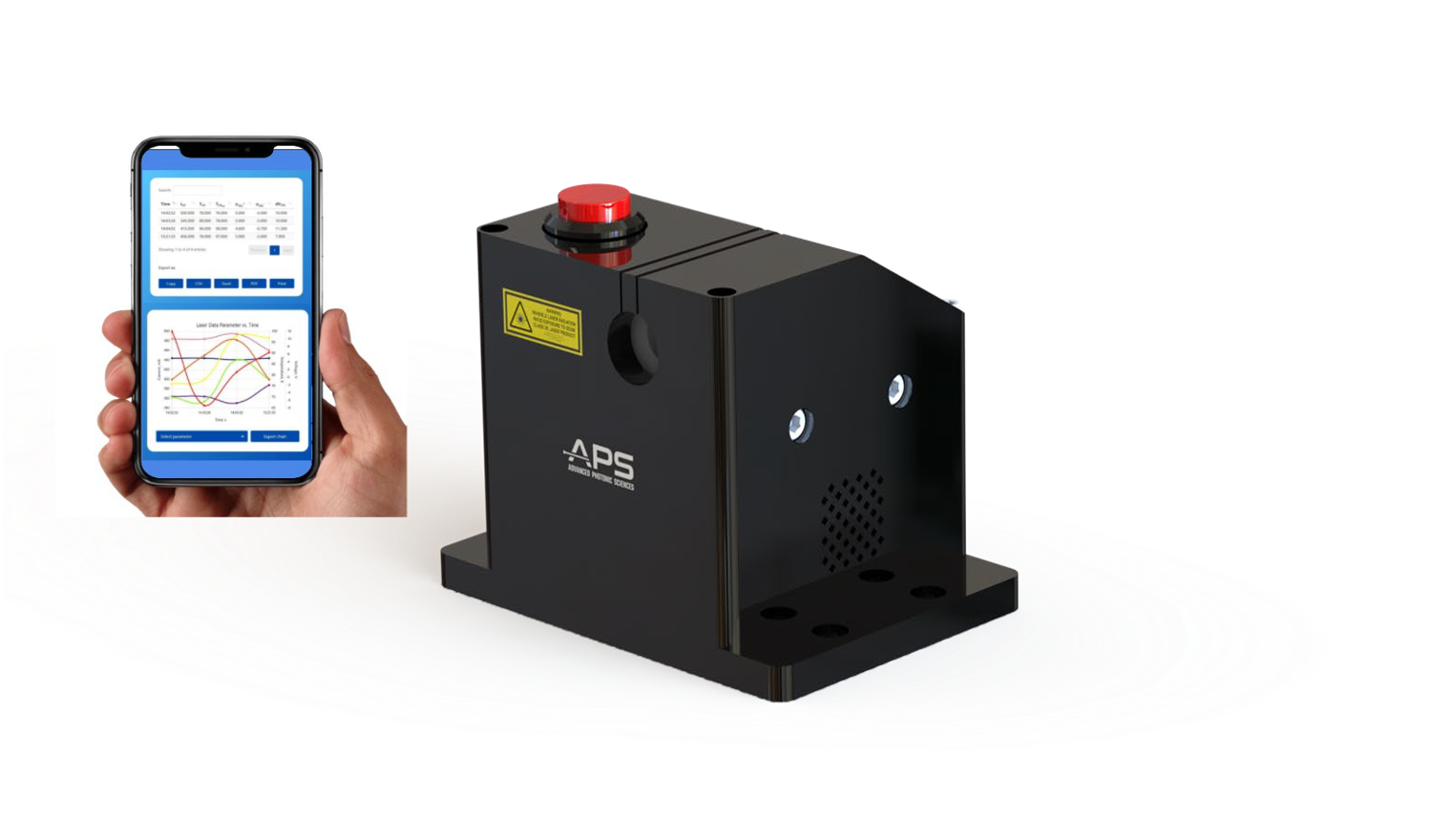 First Internet-Connected Laser For Remote Monitoring and Logging!
First Internet-Connected Laser For Remote Monitoring and Logging!
SmartLaserTM Features
- Remote Monitoring and Logging of Laser Performance Parameters
- Plug and Play
- Push-Button Activated
- Internal Air-Cooling
- TEC-Based Temperature Control
- Automatic Current Control
- RF and USB-C Connectivity to Internet
- Universal Laser Module: Use to Operate With Any of Our Diode Lasers
- Small Footprint: 2.5” x 2.5” (6.35 cm x 6.35 cm)
- Easily Adjustable Aspheric Collimator
- Laser Shutter For Safety
- FlexLightTM Mini-Distance Sensor
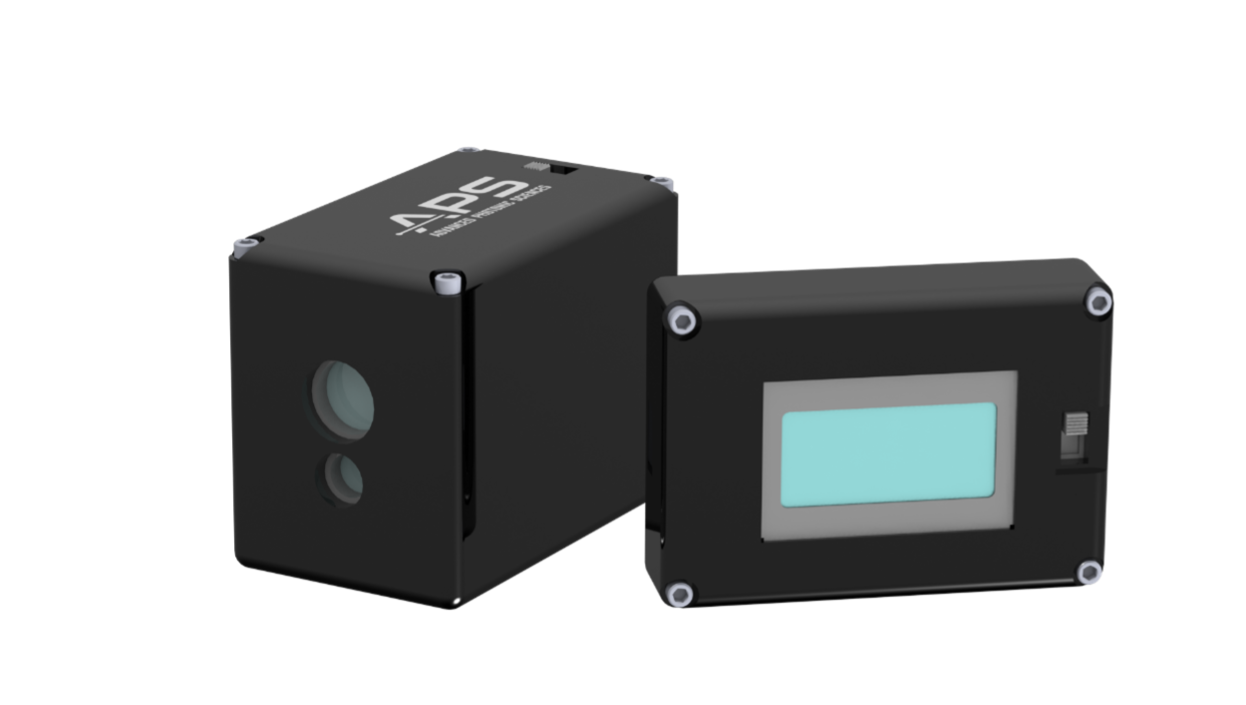
Measure Height, Measure Distance, Obstacle Avoidance, Robotics Sensor
FlexLightTM Features
- USB-C Functionality: Power From Car, From Computer, Wall
- Compact Size
- Laser Unit (1.5” x 2.5” x 2”))
- Display Unit (5” x 2” x 0.6”)
- Laser Class: Class II
- Lightweight: (<1lb)
- Laser Wavelength: 635 nm
- Operating Distance: Up To 60 m
- Distance Resolution: +/- 3 mm
- Maximum RF Communications Distance: 80 m
- Multi-Unit Connectivity: Power a Network of Sensors
- Magnetic Mounting On Any Metal Surface
- 3-D Printed Enclosures
- Wide Temperature Range (WTR) Module
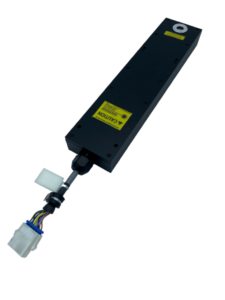
APS manufactures a number of laser modules for commercial use as well as on a proprietary basis. Our WTR (wide-temperature-range) green or red laser module has been continuously manufactured for over fifteen years, with over 13,000 successfully operating in the field in very frigid and hot environments. These modules are extremely rugged and easily survive the high-G environment associated with materials handling applications. They project a red or green line that can be used for the precise alignment of forklift blades and other applications. APS also manufactures other modules used in medical laser devices, as an alignment aid in sawmills, and for various pointing and illumination applications.
Diode-Pumped CW Visible and Infrared Solid-State Lasers
APS was the first manufacturer in the U. S. to offer domestically produced green microlasers, introducing our MicroGreen and MiniGreen laser products in 2005. Today, our company continues to manufacture those devices, with many thousands in operation around the world in diverse applications such as medical alignment, pointing, materials handling alignment, and in various illumination devices such as laser flashlights and Laser Dazzlers. These lasers, which continually find new applications, are known for their ruggedness and quality. In recent years we have added infrared microlasers to our product line, including 1064 nm and 1535 nm devices. We provide existing and new customers for our microlasers with excellent technical and applications support, and we have a stellar record for on-time product delivery. All of our products are manufactured according to exacting Toyota-like quality standards, and our company continually strives towards zero-defect manufacturing.
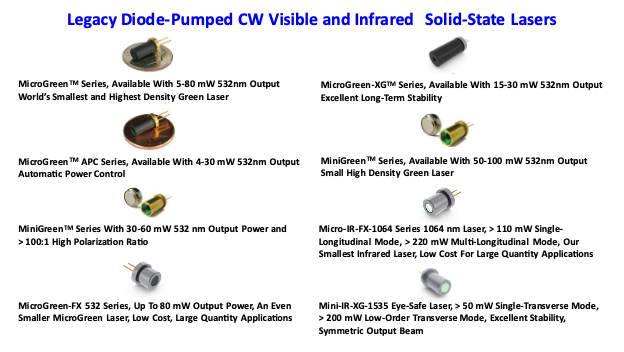
Cryogenic Lasers
APS' scientists and engineers have helped to pioneer the development of cryogenic lasers. The company presently holds four world records for cryogenic laser performance, including the highest CW sustained average power (963W), the highest picosecond average power (758 W), the highest picosecond frequency-doubled green average power (201 W), and the highest efficiency (please see References page elsewhere on this website).
The many advantages of cryogenically-cooling solid-state lasers have been described in detail in two recent Invited Review papers: (The Application of Cryogenic Laser Technology to Ultra-Short Pulse Lasers, D. C. Brown, S. Tornegard, J. Kolis, C. McMillen, C. Moore, L. Sanjeewa, and C. Hancock, Invited Review Paper, Applied Sciences 6, 23 (2016)), (Cryogenic Nanosecond and Picosecond High Average and Peak Power (HAPP) Pump Lasers For Ultrafast Applications, Invited Paper, D. C Brown, S. Tornegard, and Joseph Kolis, Journal of High Power Laser Science and Engineering 4, e15 (20176)). In those papers, our team also presented a recent compilation of the thermal, elastic, spectroscopic, nonlinear, and optical and dispersion properties of most laser materials used to date for cryogenic lasers.
In general, cryogenically-cooling laser crystals to 77 K and below results in an orders-of-magnitude decrease in the value of thermally induced aberrations as well as enhanced laser properties. For Yb based laser materials in particular, the kinetics system that is quasi-three-level at room temperature is close to 4-level at 77 K eliminating ground-state absorption, laser absorption and emission cross-sections increase, and the saturation fluence and intensity both decrease significantly.
Cryogenic lasers have operating characteristics that are very favorable for providing high average and peak power (HAPP) sources for ultrafast lasers, and may be used to provide high average power frequency-doubled pump lasers for conventional Ti:Sapphire ultrafast systems to increase the average power from typically a few tens of watts to the kilowatt level and beyond. The same cryogenic laser systems may be used to provide intense high average power nanosecond and picosecond pumps for OPCPA systems that are currently under intense development. Most cryogenic laser systems demonstrated to date have used liquid nitrogen as the coolant. In some cases, however, closed-cycle cryogenic laser systems are needed. In the Figure shown below, a completely closed-cycle Yb:YAG cryogenic laser amplifier system that was designed and built at APS is shown. The system uses four closed-cycle pulse-tube coolers with about 90 W of heat removal at 80 K per cooler, and eight Yb:YAG active-mirror disks.
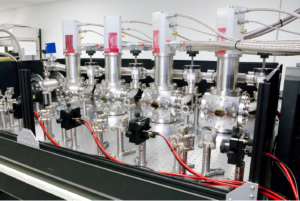
Laser Materials Research and Development
APS participates in several laser and nonlinear materials collaborations, with Clemson University, the US Army Research Laboratory, Montana State University, and with Blue Ridge Optics. Our company has a robust laser materials research program, with a complete spectroscopy laboratory used to characterize new and legacy laser and nonlinear materials. Absorption and emission cross-sections can be obtained at room temperature and cryogenic temperatures down to about 77. We can also generate emission measurements in the range from 300-1700 nm.
Our collaboration with Clemson University involves the investigation of hydrothermally grown laser and nonlinear materials, a particularly attractive crystal growth technology that is scalable, results in significantly lower growth temperatures, and minimizes the creation of voids and defects during growth. This is a particularly attractive growth option for sesquioxide laser materials that have traditionally been grown using other methods that need very high growth temperatures, exceeding 2000 oC. Over the past decade, our groups have investigated scores of laser materials. Most notable amongst these are the nonlinear materials RBBF, KBBF, and KTP, and rare-earth doped laser materials that use as their base crystals Lu2O3, Y2O3, Sc2O3, and LuAG. We have in addition grown and investigated co-doped materials such as Cr4+, Nd:YAG and Cr4+, Yb:YAG. Our collaboration also demonstrated the first epitaxial-like deposition of Sm:YAG layers on YAG, a technique that is promising for the suppression of amplified spontaneous emission (ASE) and parasitic oscillations in Nd:YAG laser amplifiers and crystalline fiber amplifiers.
APS maintains an ever-expanding database of absorption data for many laser materials. Publication quality plots of absorption coefficient or cross-sections, as well as the raw data for many laser materials can be found in our Laser Materials page and may be downloaded for free.
APS routinely supplies spectroscopic data to collaborators and customers. We can provide one-off or routine spectral measurements of most solid-state laser materials, including doping ion calibration runs and standard absorption spectra quality-control scans. A sample of our absorption data is shown below for Yb:YAG at five different temperatures.
